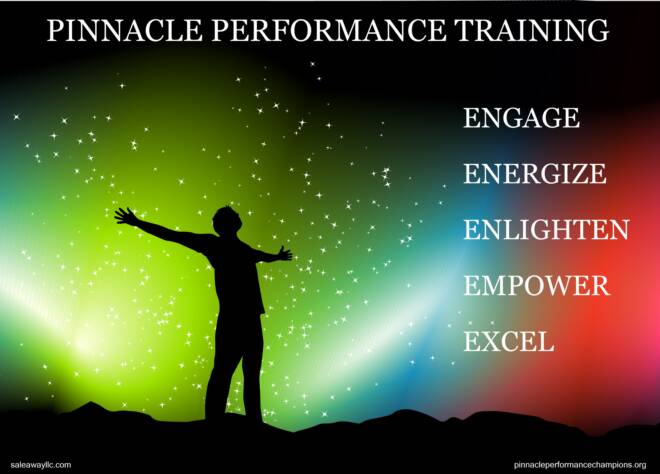
If you’re familiar with my Pinnacle Performance Training or have been reading my columns in Tire Review over the past few years than you know my focus is on success and creating the winning sales, customer service and workplace culture that differentiates and elevates businesses above and beyond its competitors.
In this article, I’m literally flipping that on its head and taking an opposing view of many of these proven success principles. Since 80% of all businesses are not performing at the level of the top 20%, its logical to assume that most businesses are closer to these positions than the minority that are succeeding at the highest level.
With that, here are six proven ways to lose customers and damage your business:
Don’t Prepare

When Ben Franklin said “By failing to prepare, you are preparing to fail.” he was clearly misinformed. You’ve been getting by all these years without proper preparation so why start now? Sure, your sales and service people “wing it” in their customer interactions and you’re no doubt losing sales to well-prepared competitors but that’s okay. It’s the way we roll around here; we’re born to be wild!
Besides, all that ‘preparation’ stuff takes time and time is in short supply around here. We may not have the time to properly prepare and do it right at the moment, yet we always seem to find the time to fix it later.
Focus on sales, not service

Business is really all about the numbers. All this mumbo jumbo about customers and enhancing their experience to create sales and loyalty to the brand is just a fad. What your business needs is sales today, not customers tomorrow!
You’re also going to want to spend that marketing budget on advertising to drive more traffic in. Why invest in your existing customers’ experiences (to build loyalty, generate referrals and reap long-term gains) when you can spend much more money on advertising to attract new customers and make a few sales today?
It’s probably a good idea to have a sales meeting and yell at the team for poor production. “Close more deals!” That should help. Better yet, you should hire a consulting firm to train your sales team to be more aggressive and pushy to sell more prospects. After all, making sales today is more important than building customer relationships for tomorrow, plus all that pesky repeat business and new business referrals it can create.
Focus on price, not value

Focusing on value means delivering more for customers money than your competition does. Consumer research confirms that, when a customer perceives additional value, they are willing to pay more for a business’s products and/or services.
The primary driver of a customers’ perception of value is the quality of the service provided them. To lose customers and damage your business you should absolutely avoid improving the quality of service to increase perceived value altogether. Instead, focus on coupons and aggressive discounting. People love coupons and discounts! As long as sales are coming in, who needs profits?
Since most shoppers consider products and services a commodity, and often want the cheapest available, you’ll also want to make sure your sales staff doesn’t communicate the value of your offerings. And, by all means, do away with any value-added services you may be offering. That will only enhance the customers perception of value and drive more profitable sales. Yuck. To fail effectively, your sales staff should avoid value selling. Instead, discount early and often.
Fail To Deliver

There are a number of ways to fail to deliver and each one is proven to lose customers and damage your business!
Let’s start with quality work. Service businesses build their reputations on quality work, so you’ll want to stop doing any of that straight away. Of course, you should never ever do anything less than honest, but there are other ways to dramatically reduce quality. As an example, skip those post-sale quality assurance initiatives and you’ll be well positioned to have disgruntled customers come back to you with problems you missed and how they’ll gladly take their business to a competitor next time.
Customers value service providers that are responsive and proactive to their needs so, presto. Just flip that around and be unresponsive and reactive. If your business has the customer waiting while you’re performing their service, don’t provide any progress updates. Let the customer get up and come to the counter. If they’re not in-house, let them call you – ideally several times – to check on their service status.
No doubt you’re familiar with the popular phrase “under-promise and over-deliver”. This is another easy role reversal to now “over-promise and under-deliver”.
Here’s a great little gem of an actual account from a tire business that did a masterful job at this:
A customer walks up to the counter and asks how long it’s going to be to have their new tires installed. The employee responds, “We’ll have you in and out in about a half hour.” Customer replies, “Great, I’ll wait then,” and goes and sits in waiting area.
A half hour later, her vehicle is still parked in the lot with absolutely no explanation from any store employee. Another customer walks in and the first customer overhears the same empty “we’ll have you in and out in about a half hour” pledge. As soon as the second customer sits down in the waiting area, the first customer says, “They’re lying; I’ve been here over a half hour already and they haven’t even taken my car in yet.”
Later, that same customer posts a negative review on the Internet making a case that the entire business is dishonest. Not only will she never come back, but now she also told all of her friends and co-workers not to do business there. One incident of failing to deliver as promised has now produced dozens of potential customers lost.
Be Inconsistent

When customers can count on consistently great service each time they do business with you, their confidence increases and they are far less likely to shop around for their service needs. However, when the customer’s experience is inconsistent – exceptional one visit and so-so or poor the next – his or her confidence is compromised and (as influenced by the perceived risk) they are far more likely to consider competing alternatives.
A consistent customer experience builds consumer confidence and strengthens a company’s brand, but where’s the fun in that? Be spontaneous and mix it up a bit instead. All those successful service businesses, hotels, restaurant chains and franchises with their fancy systems and processes, boring! Be hit or miss and send a clear message to customers that they likely will not receive the same level of service in the future. That should do wonders when it comes to losing customers and damaging your business!
Be Unremarkable

Consumer research has shown that approximately seven out of 10 customers leave a business because of indifference. They feel like “just another transaction” and have no emotional engagement with the business.
As your potential customers shop around with very little to distinguish one business from the next, they naturally default to the cheapest price for the product or service they’re seeking. Losing on price or discounting is perhaps the single biggest consequence businesses suffer for being unremarkable.
Of course, in sticking with our “losing customers and damaging your business” theme, you’ll want to follow the crowd, play it safe, stick to the norm and deliver ordinary, unremarkable customer experiences. Any remarkable efforts will only foster customer engagement and rave referrals, creating loyal customers and even more business.
And who needs that?
Steve 🙂
Also on LinkedIn @ How To Fail In Your Business



























